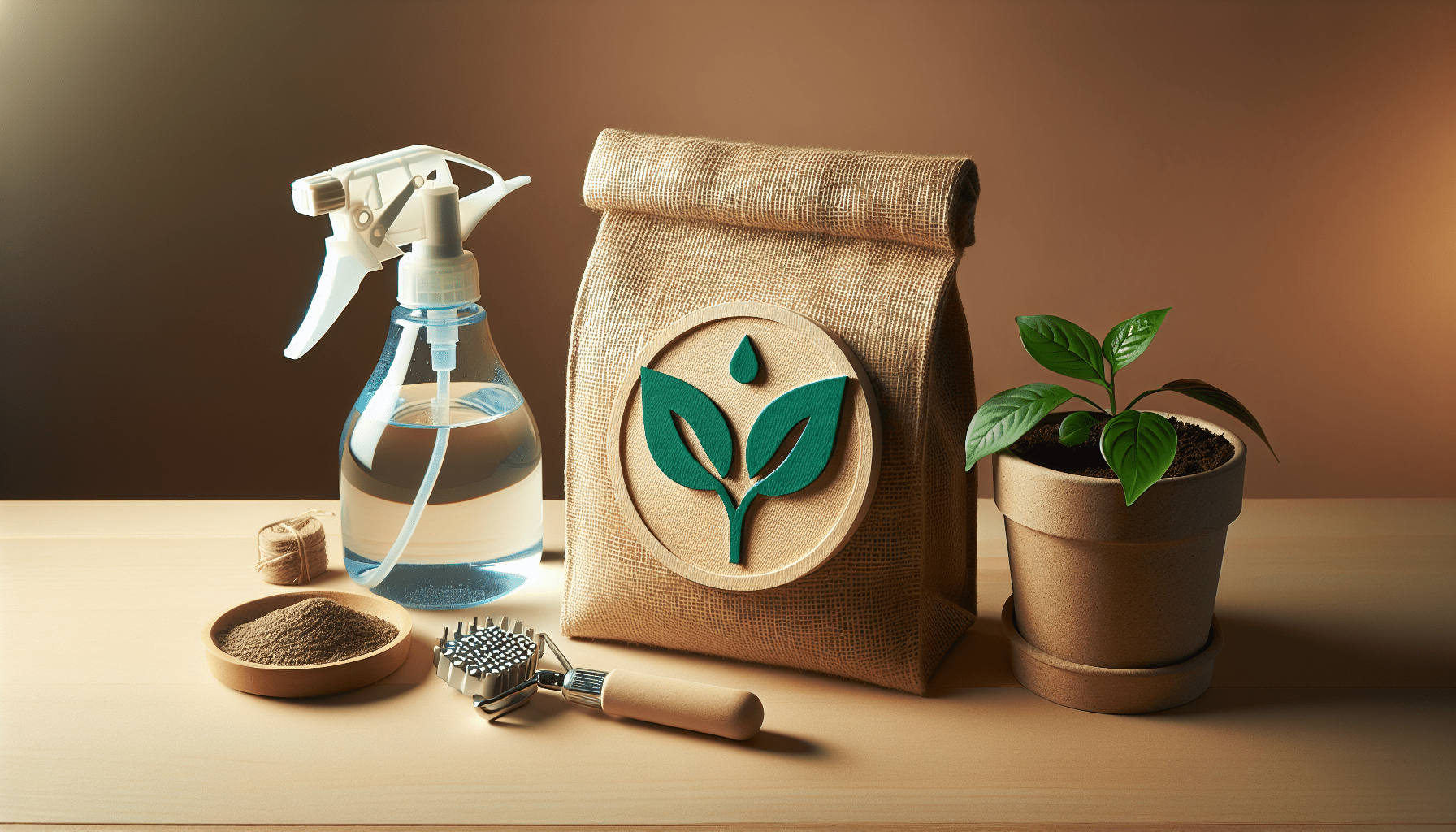This post may contain affiliate links which means I may receive a commission for purchases made through links. Learn more on my Private Policy page.
Are you looking for ways to reduce the negative effects of fertilizers and pesticides on the environment? In this article, you will discover practical tips on how to minimize the environmental impact of these agricultural inputs. By following these strategies, you can help protect our planet while still maintaining healthy crops. Let’s dive in and learn how to be a responsible steward of the land.
How To Minimize The Environmental Impact Of Fertilizers And Pesticides
Have you ever wondered how you can reduce the environmental impact of fertilizers and pesticides in your garden or farm? By making simple changes to your practices, you can minimize the negative effects these chemicals have on the environment. Let’s explore some easy steps you can take to protect our planet while still achieving a beautiful and productive garden.

Understanding the Environmental Impact of Fertilizers and Pesticides
Before we delve into how to reduce the impact of fertilizers and pesticides, it’s important to understand the ways in which these chemicals can harm the environment. Fertilizers and pesticides are commonly used in agriculture to promote plant growth and control pests, but they can have detrimental effects on the ecosystem if not managed properly.
Eutrophication
Excessive use of fertilizers can lead to eutrophication, a process where nutrients from the fertilizers wash into water bodies, promoting the growth of algae and depleting oxygen levels. This can result in fish kills and harm aquatic life.
Water Pollution
Pesticides can leach into groundwater or run off into surface water, contaminating drinking water sources and affecting aquatic organisms. They can also harm non-target species such as bees and other pollinators.
Soil Degradation
Continuous use of fertilizers can lead to soil degradation, including nutrient imbalances, decreased soil fertility, and erosion. Pesticides can also harm beneficial soil organisms, impacting soil health.
Sustainable Practices to Minimize Environmental Impact
Now that we understand the potential harm fertilizers and pesticides can cause, let’s explore some sustainable practices you can adopt to reduce their environmental impact. By implementing these techniques, you can protect the environment while still achieving your gardening goals.
Soil Testing and Nutrient Management
One of the key steps in minimizing the environmental impact of fertilizers is to conduct soil tests regularly. By understanding the nutrient content of your soil, you can apply fertilizers more efficiently and avoid overapplication. This not only saves you money but also prevents excess nutrients from leaching into water bodies.
Use Organic Fertilizers
Consider using organic fertilizers such as compost, manure, or organic soil amendments instead of synthetic fertilizers. Organic fertilizers release nutrients slowly, reducing the risk of nutrient runoff and eutrophication. They also improve soil structure and support beneficial soil organisms.
Crop Rotation and Cover Cropping
Implementing crop rotation and cover cropping practices can help reduce the need for synthetic fertilizers and pesticides. Different plants have varying nutrient requirements, so rotating crops can prevent nutrient depletion and pest buildup in the soil. Cover crops also add organic matter, suppress weeds, and improve soil health.
Integrated Pest Management (IPM)
Integrated Pest Management is a holistic approach to pest control that emphasizes prevention and least-toxic methods. By combining cultural practices, biological controls, and targeted pesticide applications, you can manage pests effectively while minimizing environmental harm. Encouraging natural predators, using traps, and practicing good sanitation are key components of IPM.
Choosing Environmentally-Friendly Fertilizers and Pesticides
When selecting fertilizers and pesticides for your garden or farm, it’s essential to choose products that are environmentally friendly and safe for non-target species. Look for certifications such as Organic, OMRI Listed, or EPA Safer Choice to ensure that the products meet rigorous standards for environmental protection.
Slow-Release Fertilizers
Opt for slow-release fertilizers that feed plants gradually over time, reducing the risk of nutrient runoff and leaching. Slow-release fertilizers are available in various forms, including granules, spikes, and coated pellets, and provide consistent nutrition to plants without causing nutrient imbalances.
Natural Pesticides
Instead of synthetic pesticides, consider using natural or biological pesticides derived from plants, bacteria, or fungi. These products target specific pests while minimizing harm to beneficial insects, wildlife, and the environment. Neem oil, insecticidal soap, and Bacillus thuringiensis (Bt) are examples of natural pesticides that are effective and eco-friendly.
Beneficial Insects and Plant Diversity
Attracting beneficial insects to your garden can help control pest populations naturally and reduce the need for chemical pesticides. Planting a diverse range of flowers, herbs, and vegetables can create habitats for beneficial insects and promote ecological balance. Ladybugs, lacewings, and parasitic wasps are examples of beneficial insects that prey on garden pests.
Proper Application and Timing
To minimize the environmental impact of fertilizers and pesticides, it’s crucial to apply these products correctly and at the right times. Improper application can lead to wastage, runoff, and contamination of soil and water. Follow label instructions carefully and consider the following tips for responsible application:
Calibrate Equipment
Calibrate your fertilizer spreaders and sprayers to ensure accurate application rates and uniform coverage. Proper calibration prevents overapplication or underapplication, reducing the risk of nutrient imbalance or inadequate pest control. Maintain and clean equipment regularly to avoid clogs and malfunctions.
Apply During Calm Weather
Avoid applying fertilizers and pesticides during windy or rainy conditions, as these factors can cause drift and runoff. Apply products when the weather is calm, and there is minimal risk of off-target movement. Consider applying during the early morning or evening when temperatures are cooler and winds are calm.
Use Protective Gear
When handling fertilizers and pesticides, wear appropriate protective gear such as gloves, goggles, and masks to minimize exposure and protect yourself from harmful chemicals. Follow safety precautions outlined on product labels, and store chemicals in secure locations away from children and pets.

Monitoring and Evaluation
After implementing sustainable practices and using environmentally-friendly products, it’s essential to monitor their effectiveness and evaluate their impact on your garden or farm. Keep track of plant growth, pest populations, soil health, and water quality to assess the success of your efforts in minimizing environmental impact.
Soil and Water Testing
Regularly test your soil and water for nutrient levels, pH, and contaminants to ensure that your fertilization and pest control practices are working effectively. Monitoring soil health can help you make adjustments to your fertilizer application rates, while water testing can identify potential contamination from pesticides.
Pest Scouting
Monitor your garden or crops for signs of pests and diseases regularly to catch infestations early and prevent damage. Scouting involves inspecting plants for chewed leaves, wilting, discoloration, or abnormal growth. By identifying pests early, you can take appropriate action before populations become unmanageable.
Beneficial Insect Observation
Observe the presence of beneficial insects in your garden and assess their impact on pest populations. Look for ladybugs, hoverflies, praying mantises, and other beneficial species that contribute to natural pest control. Creating a healthy ecosystem with diverse plants and habitats can attract and support beneficial insects.
Conclusion
By following these tips and adopting sustainable practices, you can minimize the environmental impact of fertilizers and pesticides in your garden or farm. Protecting our ecosystems and wildlife is crucial for maintaining a healthy planet for future generations. Let’s work together to create a sustainable and eco-friendly environment while enjoying the benefits of a beautiful and productive garden.
This post may contain affiliate links which means I may receive a commission for purchases made through links. Learn more on my Private Policy page.

